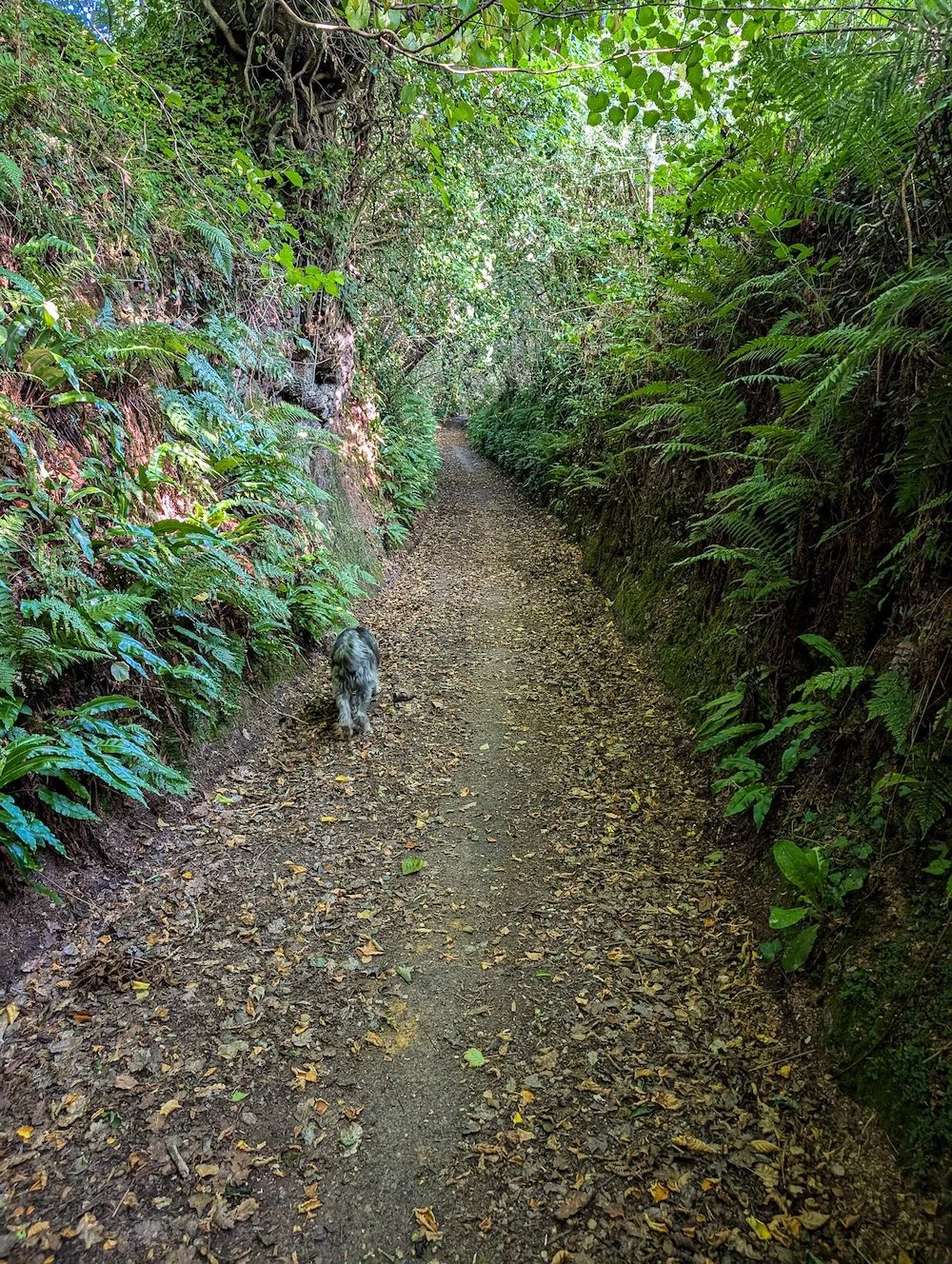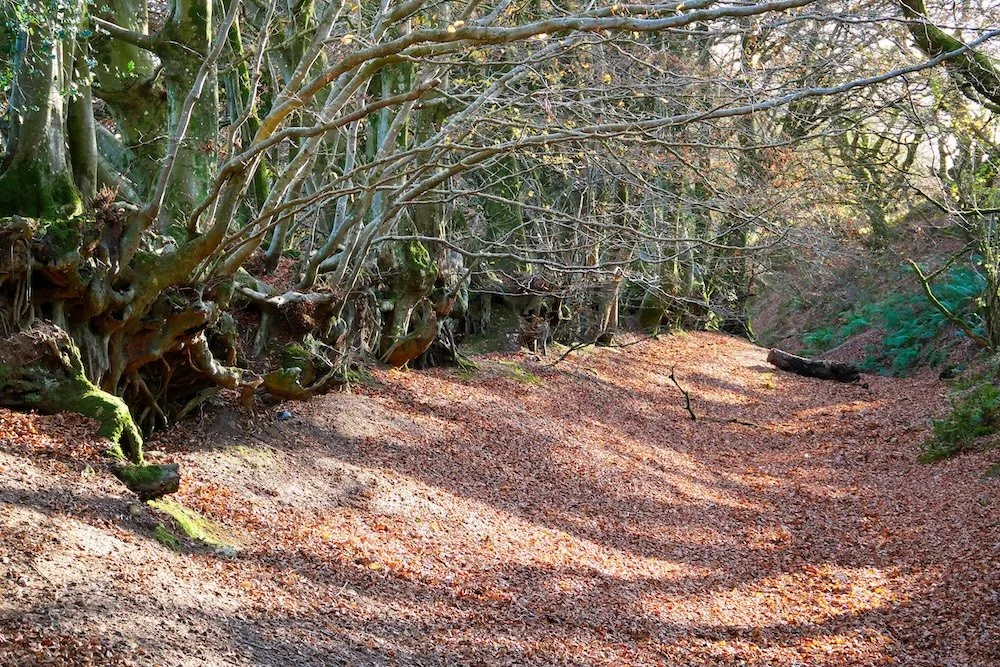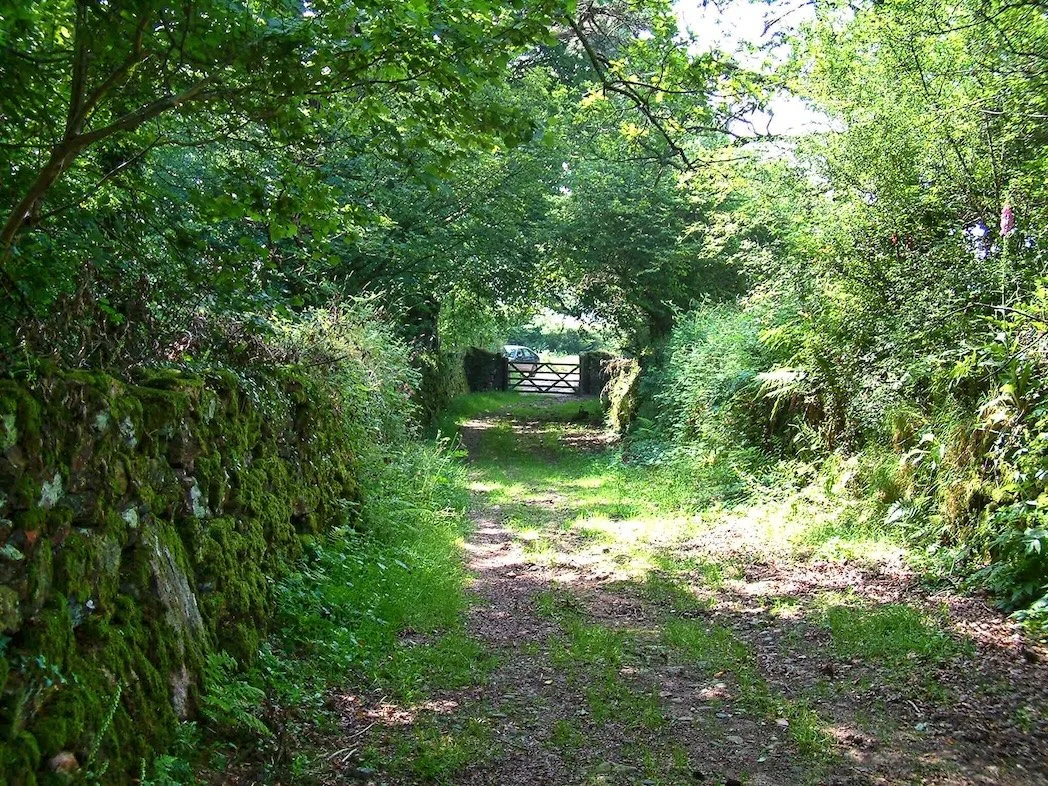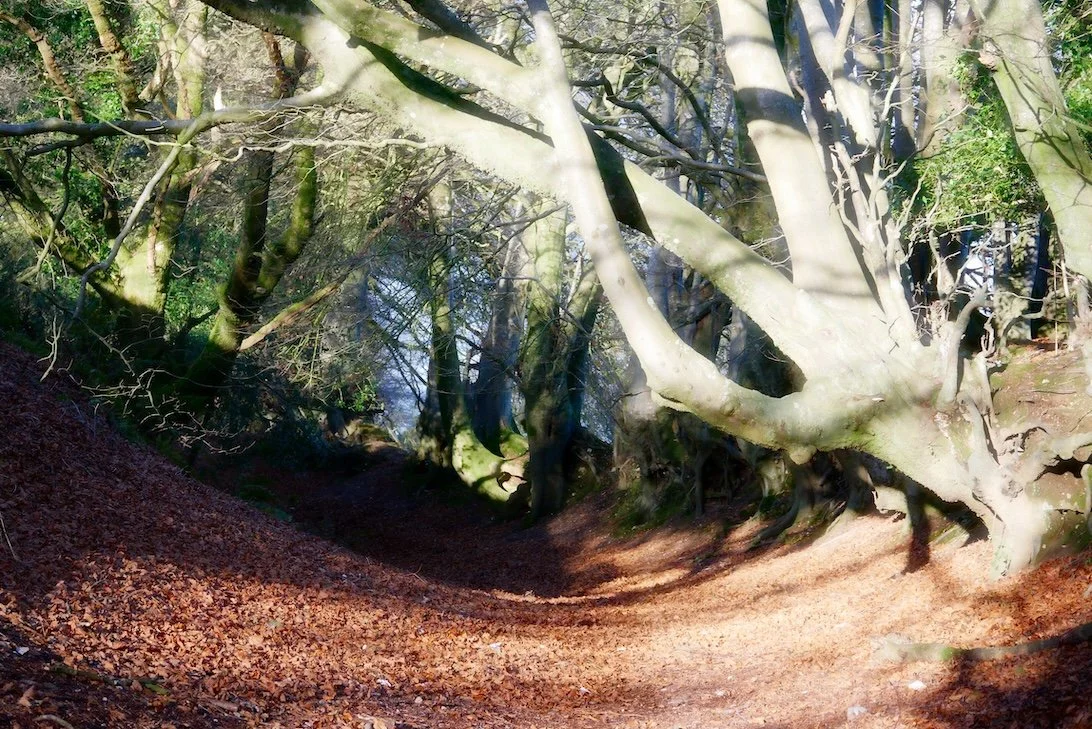Cooling Off in a Heatwave: The West Country’s Secret Weapon – Sunken Lanes and Devon Hedgerows
Heatwaves in the UK and the West Country’s Cool Escape
Heatwaves are hitting us thick and fast – indeed the UK is enjoying or enduring one this very day. Which is why I went out early this morning for the daily dog-walk. However, here in the West Country we do have a secret weapon in our armoury which helps us when the heat gets too hot.
I am talking about the West Country’s most extensive icon – the myriad deep sunken lanes that wend and weave their way from one end of the region to the other. It was already hot on my walk this morning at 9.30, but the sunken lanes I strolled along were damp and cool despite the heat and the drought.
Finn the lurcher enjoying a West Country sunken lane
What Makes West Country Sunken Lanes Unique
Other places have narrow country roads, but nowhere else can boast quite such deep, hollowed out, ancient byways that are one of the most wondrous features of our peninsula.
Some people, of course, loathe the lanes. They tend to be urban drivers in vehicles far too large and shiny for their own good. Others, like me, love them.
cool tree-lined lane in the West Country
Wildlife Havens: Hedgerows as the Rainforests of England
They are the English equivalent to the tropical rainforests. They teem with life. More than 600 plant species, 1,500 types of insects, 65 birds and 20 different mammals have been recorded living or feeding in the region’s magnificent hedgerows, which are the main feature of the sunken lanes. Devon alone has an astounding 33,000 miles of hedgerow.
But hedges aren’t just there for wildlife. They earn their keep as living barriers that keep stock in the fields. Presumably they also once acted as barriers to keep unwelcome visitors like wolves out.
Cool in a heatwave, typical sunken lane
Where to Find the Deepest and Oldest Lanes
These wonderful tunnels of life are a feature of a good many parts of the South West peninsula, mainly in places where the underlying rock is soft enough to be eroded by a thousand years of hooves and wheels, rain and snow.
The lanes don’t get too deep in the hard granite areas of Dartmoor and West Penwith, but if you visit the red sandstone zones of East Devon or the South Hams, or Exmoor and West Somerset, and down you go into a semi-subterranean world tinged with green. You don’t really find them quite as deep and as ancient – and as full of life – anywhere else in the world.
Fern lined lanes can be metres deep
The Unique Devon Hedge
A countryside officer for the North Devon Coast and Countryside Service once told me:
“Devon is the only county that has a type of hedgerow named after it. The Devon hedge is unique, it’s basically an earth bank that may be faced with stone or turf with a line of shrubs on top – elsewhere in the country most areas don’t start with a turf bank but at ground level.
Hollow lane in West Dorset
“There are a lot of theories, but no one knows exactly why our ancestors put structures in with a combination of wildlife and shrubs on top, as well as flowers, but it does make them very special.
“Many are very old. A quarter are more than 800 years old – and we need to compare them to parish churches in historical importance.”
Loss and Conservation of Devon’s Hedgerows
Mr Hynes regrets there was a time when farmers were pulling them out. Records in the 1950s show Devon alone had a staggering 45,000 miles of hedges compared to the pretty amazing 33,000 today.
“Some have gone and what we’ve got left we must look after,” he said. “Hedge Week (which is held in October) is all about getting people involved in looking at hedges and that’s important for farming, for wildlife, the landscape and for the people of Devon.
“Huge numbers of species are very dependent on hedges – take the dormouse as an example. Devon’s dormice are doing better than many other counties because we’ve got more beautiful hedges than most.”
Reviving the Ancient Skill of Hedge-Laying
Part of the future sustainability of the county’s hedgerows will depend on the willingness of property owners to employ proper hedge-laying techniques.
Ancient lane on Dartmoor
“There’s been a real revival in interest in this ancient skill partly because agricultural grants are more widely available, but also there’s a huge uptake in interest,” said the expert.
“I’m a keen hedge layer myself. It’s one of those things people get hooked on. You’re cutting down trees but creating something at the same time – converting a tangled old mess into something that is stock-proof and that will soon provide a habitat for wildlife.”
Hedgerows: Keeping the West Country Cool
And help keep us cool in summer – and long may the trend continue.
Ancient sunken lane in Dorset












